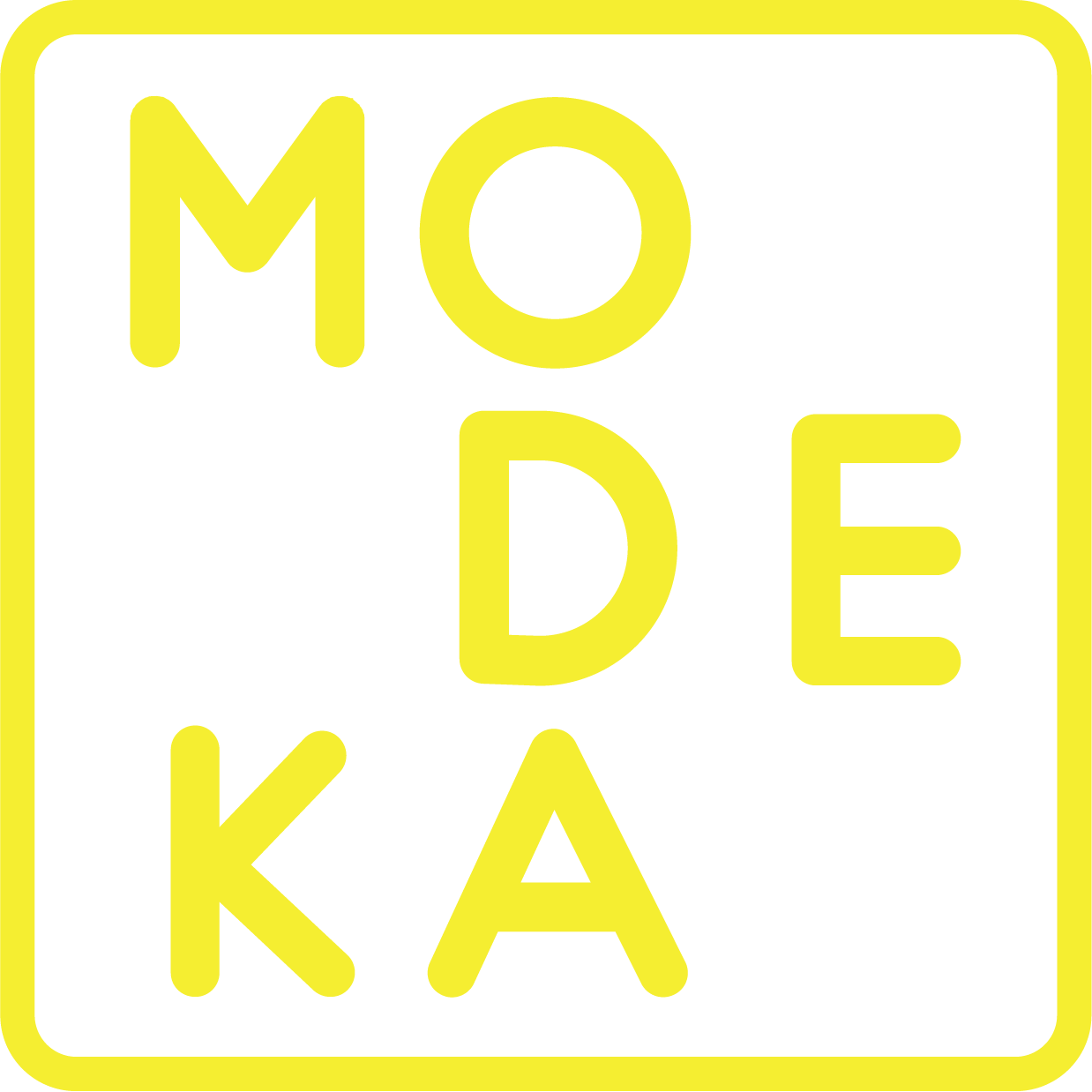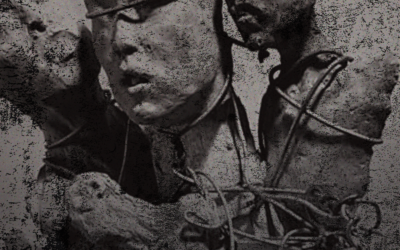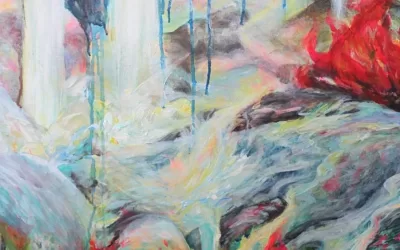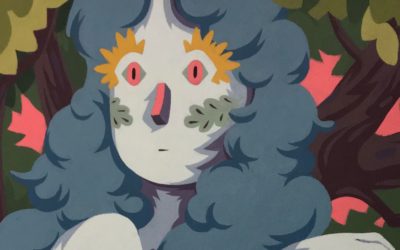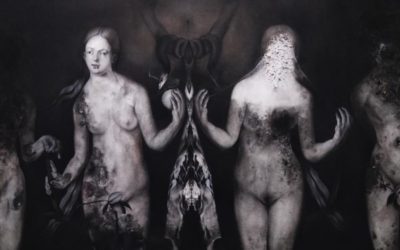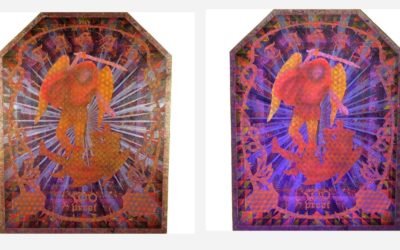Group Exhibition
Running Backwards Into The Future
Showing between 16th May — 8th June 2024
FEATURED ARTIST
Gus Albor
Isabel & Alfredo Aquilizan
Nilo Ilarde
Neal Oshima
Renato Orara
Bernardo Pacquing
Soler Santos
Angel Velasco Shaw
Judy Freya Sibayan
Gerardo Tan
Curated by
James Clar
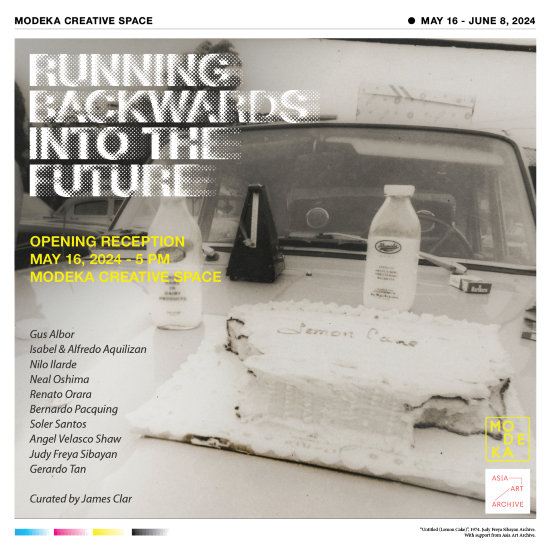
Running Backwards Into The Future | Group Exhibition
Running Backwards Into the Future features works from 10 established artists from the Philippines who are actively working today. With practices that have spanned and evolved over decades, the exhibition features early works (from 1974 to 1996) that became critical junctures to their practice. In some cases, the artist also included a more recent work, to create an evolving line and a conceptual direction that they moved along for decades.
These works, although personal, also reflect a broader range of issues each artist had to deal with at the time. They provide a snapshot of an active art scene whose diverse approaches to artistic mediums and forms can be seen here. They were created in response to certain economic, political, and technical conditions, and reflect prevailing ideas about the nature of collective action, art, self, and community identities.
Furthermore, it is impossible not to place this art scene within the context of a world before the internet, before cell phones, or before concepts such as “digital native”, where being physically present and personal conversation drove the narrative of what art was in Manila. They developed their art practices in a pre-globalized world before the standardized structure of the international galleries and art fairs, collector influence, and without the observing eye of Western curators. (In fact, the term ‘contemporary’ was only recently used within publications from the CCP but hadn’t reached the larger art audience yet). Freed from these considerations, these artists laid the foundations and cleared pathways for the generation of artists currently working now.
“It is more than obvious that [the internet’s] profound changes and turmoil, with their material infrastructures, their image production, their ideological constructions, and their acceleration, have changed and influenced all ways of living, of being, and of being-with, from dating to voting to the exchange of goods and money. Literally everything is now influenced through the digital space, and what is more, processed through algorithms, which, of course, have racist, gender-specific, class-related, and national undercurrents.” [1]
These artists, standing at the onramp of the information superhighway, remained steadfast in their exploration to create a signifying practice and “meaning-making” through the arts. They created a trajectory that would last decades to this day.
The title “Running Backwards into the Future” has a few different meanings within the context of this exhibition. First, from a personal perspective, it relates to the artists’ individual processes and artworks shown here. The works shed light on important early moments (that may or may not have been acknowledged at the time) which, looking back now, were central to how their practice developed. Second, from the perspective of the ever-expanding art scene, these artists now see the next generation of artists coming up, running on paths made easier through their own work. And lastly, from a global perspective, the title confronts and reclaims the idea of our region as being “backwards” or “Third World”. A similar argument is described in the book Unthinking Eurocentrism:
“The fundamental definition of the Third World” has more to do with protracted structural domination [that includes] crude economic categories (“the poor”), developmental categories (the “non-industrialized”), racial categories (“the non-White”), cultural categories (“the backward”), or geographical categories (“the East,” “the South”).” [2]
These artists (and their colleagues) fit all the categories mentioned above, yet despite this they’ve created work equal to or better than their “First World” Western counterparts.
In fact, they are deeply rooted in the creation of contemporary arts and culture here, and are part of the broader conversation of arts in the South East Asian region. As the world became increasingly connected, they were viewed as representatives to give insight to our culture through the museum shows, biennials, international exchanges and exhibitions they have shown abroad, and the ones they’ve curated and organized here.
These artists’ practices weave through time, overlapping often with each other, and through a revolving set of exhibition spaces to create a tapestry of the evolving Manila art scene.
Conceptual artist and former director of the erstwhile CCP Contemporary Art Museum of the Philippines, Judy Freya Sibayan learned how to shift a non-art situation into an artwork with her early performative work “Untitled (Lemon Cake)” (1974) where she inserted herself uninvited to be part of an exhibition organized by Shop 6 (headed by Roberto Chabet) by gate-crashing it with a birthday party. This is shown alongside a recent work that is an email conversation from the Singapore Biennale in 2018. This time, while being invited to be part of the exhibition, her proposal was not accepted due to institutional constraints, regardless of Judy’s alterations to it. Eventually this led Judy to pivot and realize the back-and-forth conversation would be the work itself. The persistence in creating work through varied circumstances, and seeing the exchange between parties as the work, is a strong factor in her practice.
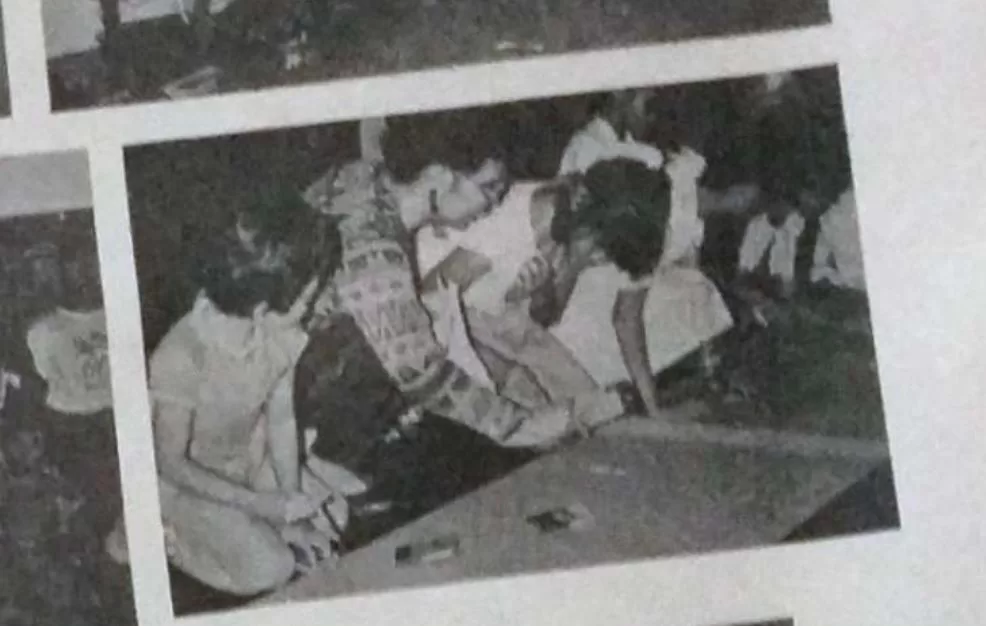
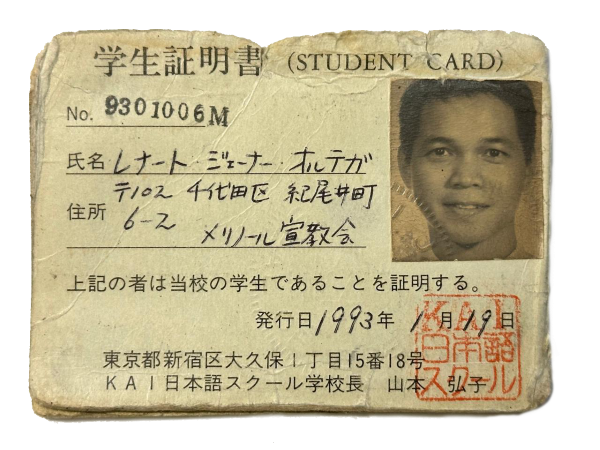
Similarly Renato Orara’s (whose work is included in variouscollections including the MoMA) had an epiphany when he took the photograph “Untitled photograph of an ice cream man and his friend.” (1977) previously exhibited at the CCP. Holding up his camera, he noticed how they staged their poses for him, this caused him to realize that his actions and art could influence actions in others. This photograph is paired with his newer “Library Bookworks” (2018) series, wherein Renato drew inside books taken from public libraries from around the Philippines and then returned them. These prints allow for cross-referencing—an intervention on the library system that turns the gallery into a library and the library into a gallery. With this network of photographs and hidden library books, this public art installation serves as a pilgrimage or a treasure hunt.
Often using readily available materials and engaging local communities, the artist couple Isabel and Alfredo Aquilizan split the exhibition prompt to show an early wall work by Alfredo “Touch Me Not” (1998) which was shown at the CCP. It is an assemblage portrait of national hero Jose Rizal that includes a handful of soil from Jose Rizal’s house in Calamba and a portrait rendered in pigs blood. This is shown alongside a new sculptural work by Isabel “Sunog Na Kanin.” (2020-2024) the solid form is made from burned rice in a cooking pot. The two works relate to their evolution as establishing artists, raising a family, and the responsibilities
each one takes.
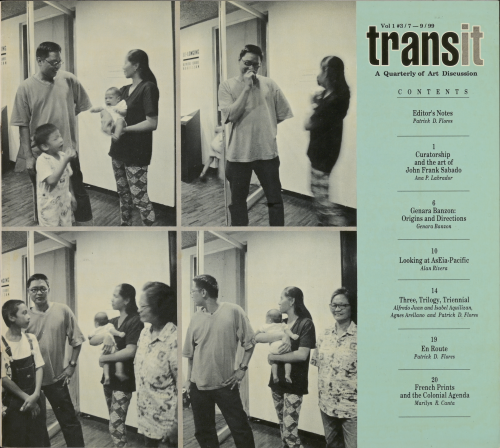
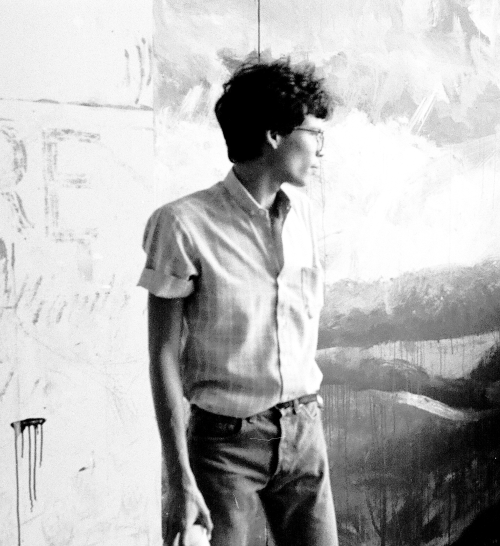
Discovering the connection between the artist and their surroundings, Nilo Ilarde brings us back to his years as a student of the influential artist/teacher Roberto Chabet, restaging a work from class “Water Work” (1980s/2024). The assignment was “water”, in which Nilo presented the daily weather report stating a forecast of rain. It rained later that day, completing the work.
Rains and floods, a hallmark characteristic of living in the Philippines, influenced the early work of Bernie Pacquing which was created when his house flooded while he was in university. The flood ruined his violin, which he initially threw out, only to retrieve it from the trash and use later to create the sculpture exhibited here. He realized that materials could be containers for personal stories, and then used as part of the larger narrative of an artwork.
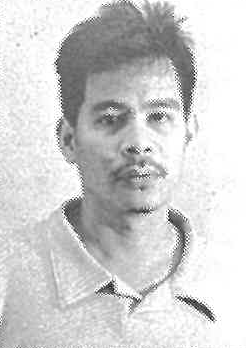
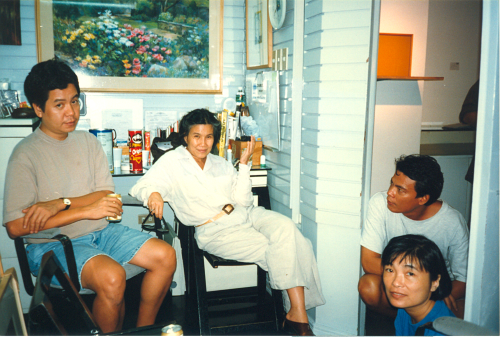
The concepts explored by Gerry Tan, who represented the Philippines at the Venice Biennale in 2022, combines science, religion, and colonialism into a glimmering cultural narrative. His work “Phosphorescent Salvation” (1996) uses luminous glow-in-the-dark statuaries in a cabinet lined with mirrors. This is shown alongside a recent painting “Beach Scene” (2023), from a series based on photos of illegal border-crossers taken by police using night-vision cameras, of green glowing figures coming towards us.
A figurehead of Philippine culture and arts, Arturo Luz, the founding director of the Metropolitan Museum of Manila and the Museum of Philippine Art in 1976, created The Luz Gallery which initiated professionalism in the artist-gallerist structure. It was here that Soler Santos was given his first exhibition. On display are three works all titled “leaves” created in 1980 and shown at The Luz Gallery 1981. Soler’s use of natural objects as geometric forms within compositions is a language he has continued to develop, as we see in his newer painting exhibited here.
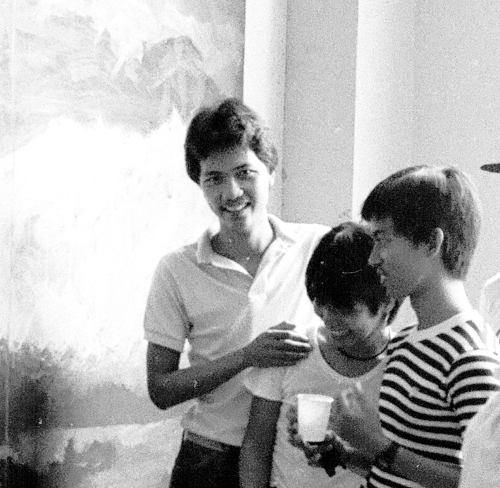
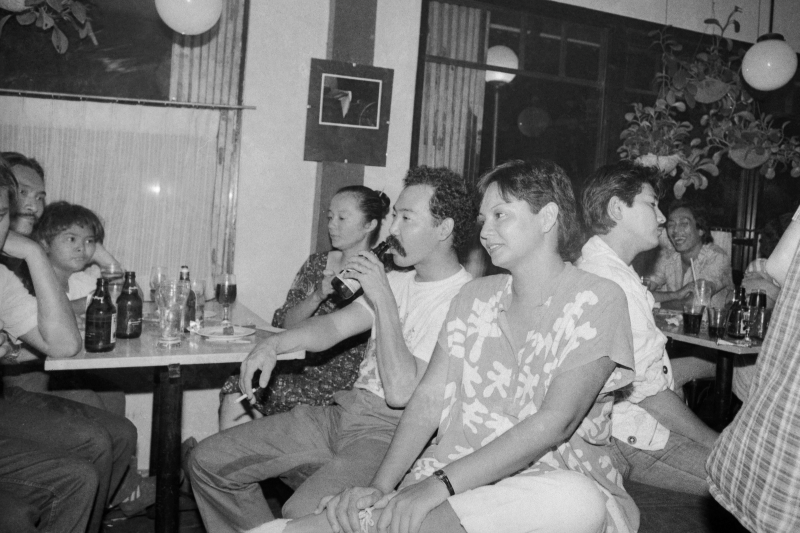
Also exploring new visual forms while utilizing traditional materials and processes, Neal Oshima, award-winning photographer known for documenting Philippine culture, focuses on the physical materiality of his practice by using the cyanotype method to print directly onto the cotton gloves used to handle photographic prints. This is shown alongside a series of photographs of Waldorf School students’ hands, presenting the physical potential of the next generation.
While she was born and raised in the United States, Angel Velasco Shaw has been active in the Philippines since the mid 1980s as a visual and media artist, curator, cultural organizer and educator. She presents her first experimental documentary film “Balikbayan (Return to Home)” (1985) within an installation called “1985” (2024) which presents archival material that show her unique view of being an outsider to locals in the Philippines, and an outsider in the USA as a minority. While her situation was uncommon in her time, especially as an artist, it has become more common in recent years. Globalization, ease of travel, and a rising awareness (and recognition) of diaspora artists have encouraged them to become more connected and involved in the local Filipino art scene.
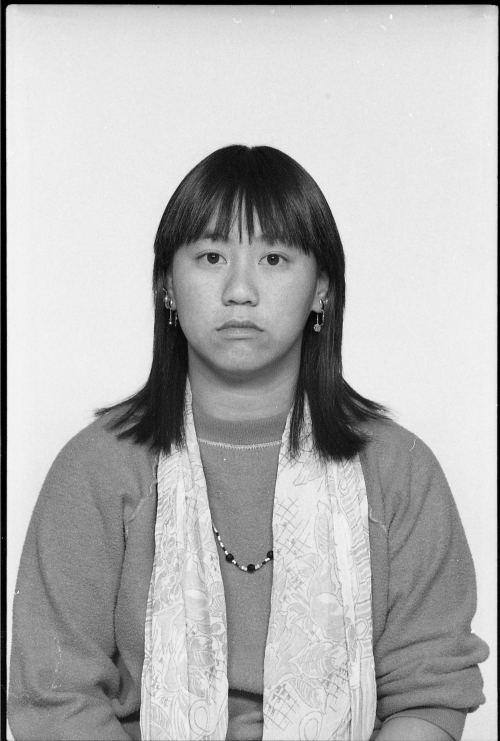
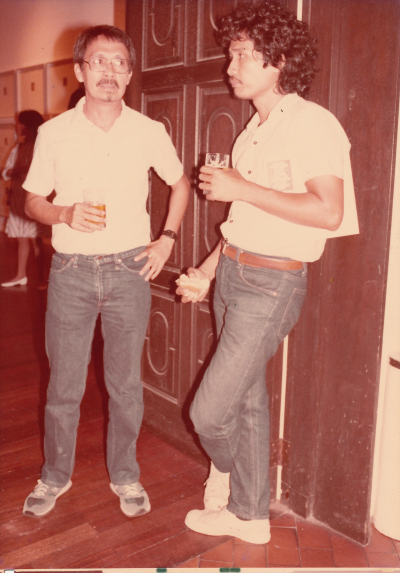
And finally, it was with great coincidence in the mid-‘80s and early ‘90s that my family, the only Filipino family in this area of rural Wisconsin, was visited by Gus Albor. At the time he was married to the daughter of my father’s coworker. When the couple would visit her family in the US, they would also come to see us, the only other Filipino family in the area. I was a child when I saw him sketching my family’s house. He gave this and other drawings to my parents on his visits from 1981 – 1994 (exhibited here alongside a new sculptural work). My family, despite the circumstantial connection to Gus, had no real involvement or exposure to the arts (neither Western art in the US, much less Filipino art). So it’s serendipitous that I grew up with these hanging in my house without realizing who it was until very recently, after I had finally moved to the Philippines myself, now as a practicing artist.
In fact, it is Gus’ work and his overlapping timeline with me and my family growing up in Wisconsin, that creates a giant narrative arc spanning 45 years. This exhibition continues a series of shows (my own exhibitions and ones I’ve curated[3]) created since moving from New York to Manila over three years ago, the purpose of which was to genuinely understand the concepts, aesthetics, personal and communal aspects of what makes us Filipino.
I was particularly interested in these artists because they formed their practices before the collective memory of the internet set in. And just as it was important for me to move to the Philippines, it was important for me to personally connect with each of these artists to learn more about the early stages of their career and the scene here. Accordingly, the selection of works in this exhibition were done through individual conversations and studio visits with each artist.
Art is a form of communication that is generated from the psyche of each artist, which in turn is developed through their own experiences, the conversations they had, the places they studied, and the environments they developed their practices in. Here we present these artists whose practices remain active and relevant today, and we find ourselves woven into, and branching from, the timelines and narratives of their work to depict the wide spectrum of Filipino art today.
To book a private viewing or to request the digital catalogue, use the forms below or contact us via email, mobile or telephone.
View the latest information on COVID-19 restrictions before booking.
Email: info@modeka.space
Mobile: (+63) 916 6976 671
Landline: (02) 5310 3771
Get digital catalogue.
Gallery
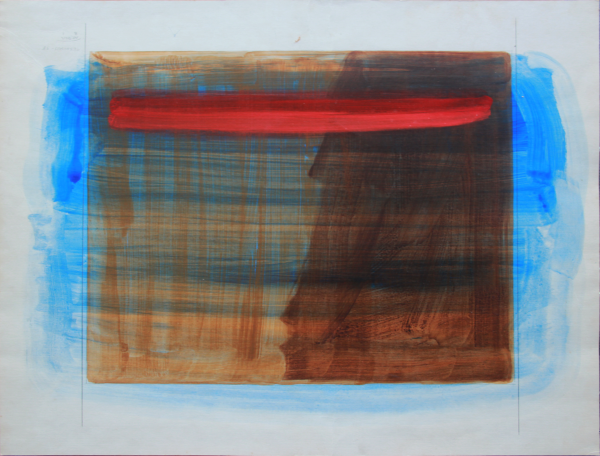
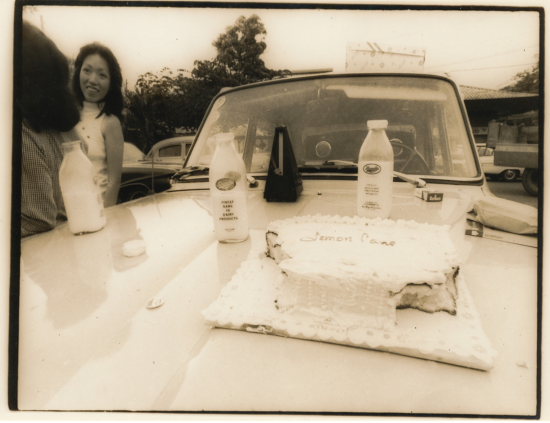
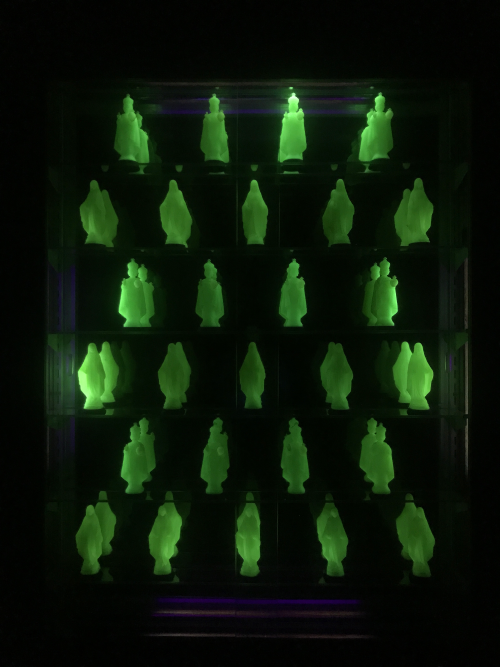
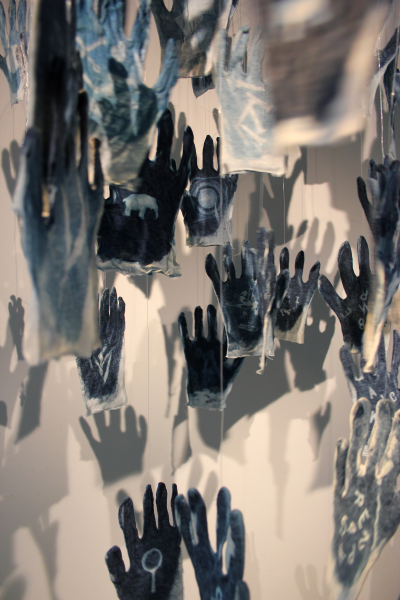
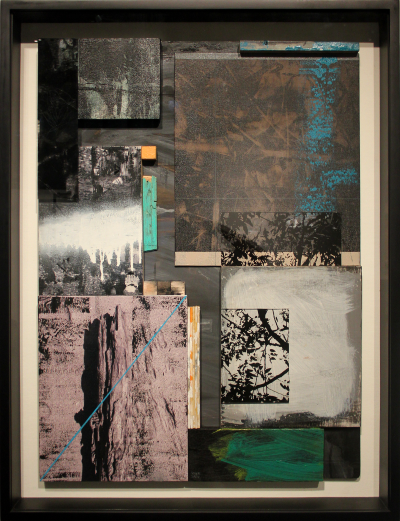


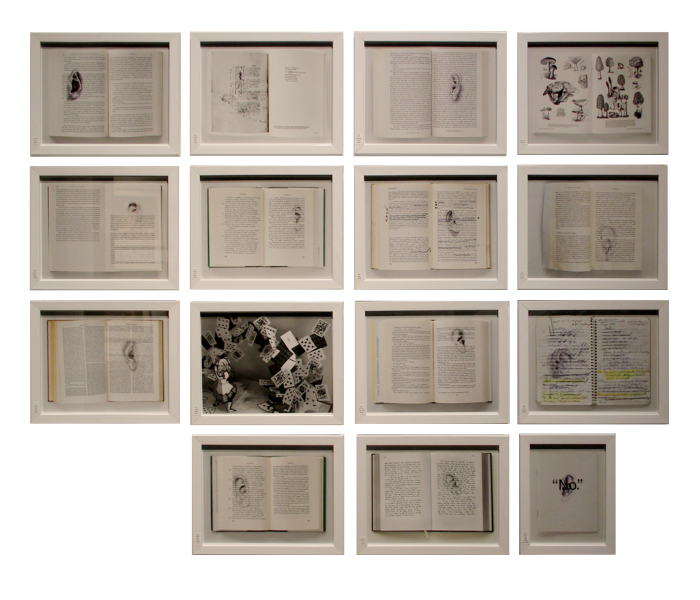
Get digital catalogue.
Explore exhibitions
Misery Loves Company | Two-Man Show
Raisehell & Wham Misery Loves Company Showing between 16th May — 8th June 2024 FEATURED ARTISTRaisehell WhamCurated by ArtistsIn Misery Loves Company, a two-man exhibition, visual artists RaiseHell and Wham explore the symbiotic relationship that...
PPP: Palapit Palapit Papangit
PPP Palapit Palapit Papangit Showing between April 17 — May 11, 2024 FEATURED ARTISTDavid Ryan Viray Dennis Occeña Ian Fabro Jayvee Necessario Kaloy Sanchez Paolo Icasas Rap Carloto Rando Onia Soika Vomiter Jigger CruzCurated by Norman CrisologoGroup Show PPP...
Enigma | Women’s Month Exhibition
Women's Month Exhibition ENIGMA Showing between March 09 — April 03, 2024 FEATURED ARTISTMimi Sanson-ViolaCamille VerCorinne DinglasanJeona ZoletaLen-LenMarita GanseMercedes CabralNatalya LagdameoOlive Jaro LopezYvette CoCurated by Mimi Samson-ViolaWomen's...
Explore Artists
Jay Francisco
Jay FranciscoBIOGRAPHY This series of paintings by Jay Francisco is inspired by branching out of his comfort zone, personally and artistically. His main focus is to encourage growth and abundance in his works and other aspects of his life, and for real growth to take...
Dennis Occeňa
Dennis James OcceňaBIOGRAPHY “Oftentimes, the ideas of my crafts come from nothing,” says artist Dennis James Occeña. “It’s ironic, but creative ideas appear after my brush on the canvas has been laid, and I can’t explain it.” Dennis discovered his artistic gifts at...
Gabe Naguiat
Gabe NaguiatBIOGRAPHY Gabe Naguiat (b. 1984) is a visual artist from Quezon City, Philippines."My work aims to raise the viewer's awareness of the multi-layered nature of our reality. I draw inspiration from graphic design, quantum physics, metaphysics, ancient...
